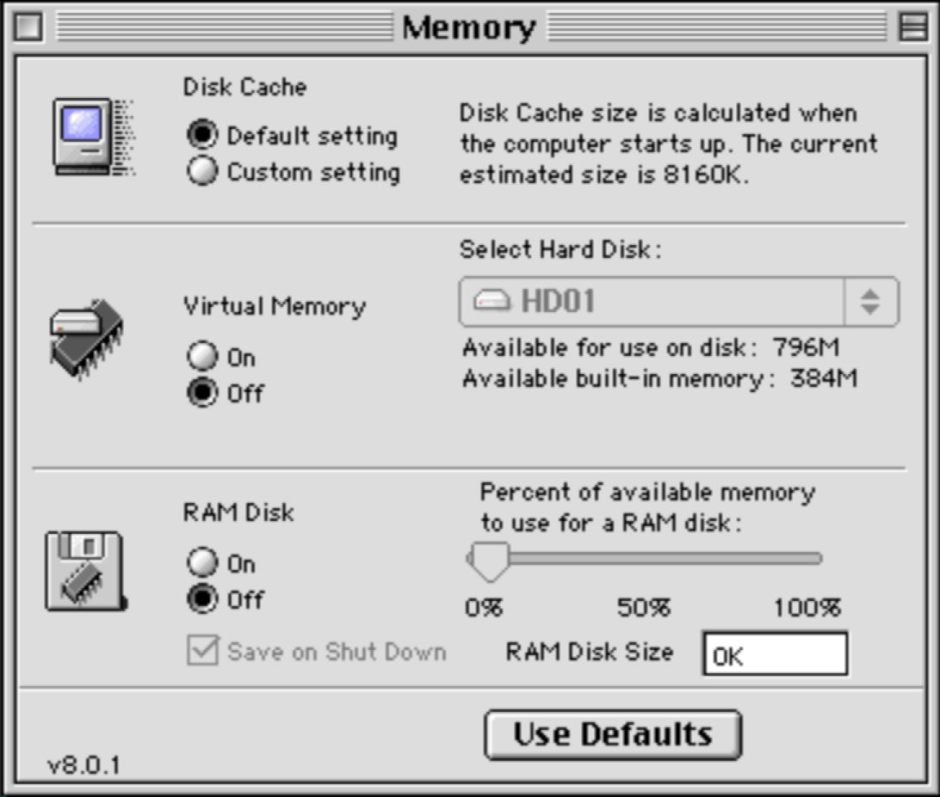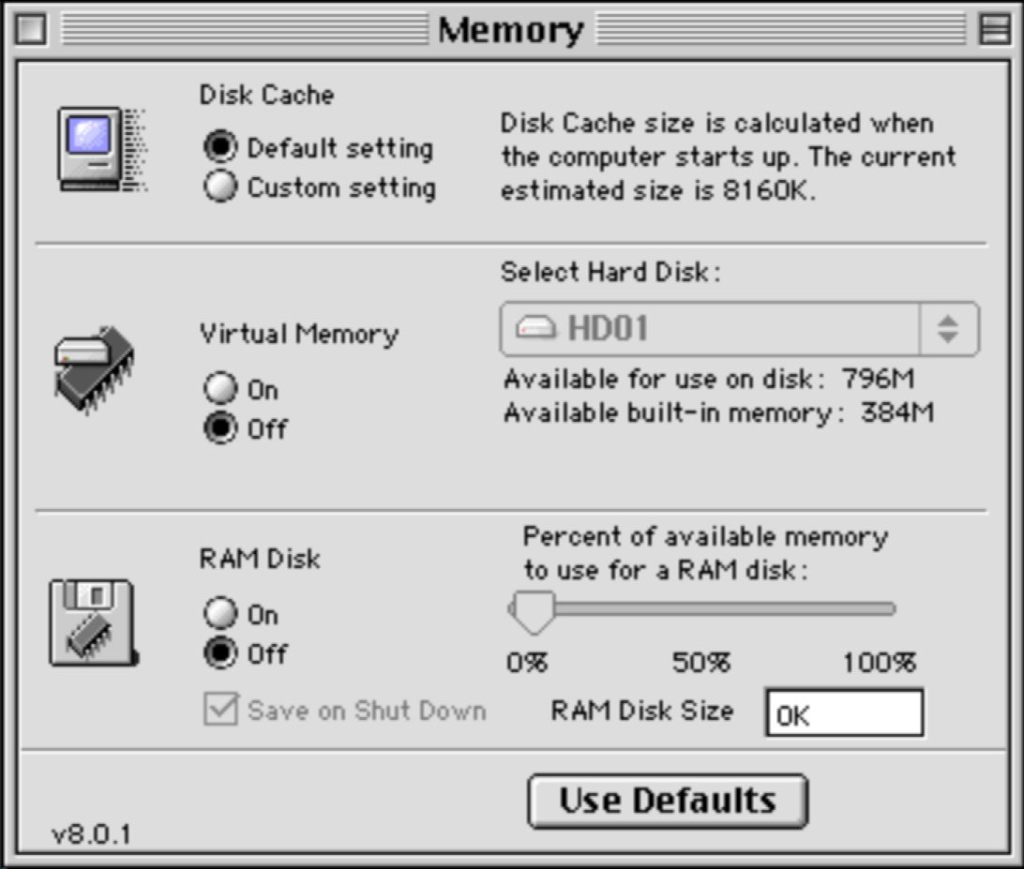As the world moved into the new millennium, Macs were in mayhem. Mac OS 9.0 was released in October 1999, but was a beast, and had so many problems that most users remained on 8.6, released earlier that year. Just to complicate matters, Apple released the Public Beta of Mac OS X just a month before Mac OS 9.0. So for a while, I was writing about three quite different operating systems: the mature if flawed embers of 8.x, the fraught newcomer 9.x, and the first sight of Mac OS X. No wonder we had to publish MacUser every two weeks.
In Mac OS 8.6, virtual memory was optional. Some apps required it, while others couldn’t run when it was enabled. Most users stuck with only enabling it when their software needed it, and made do with the limitations of physical memory of 384 MB or even less. The maximum my Blue & White Power Mac G3/350 could accommodate was just 1 GB. As apps were far more conservative in their memory requirements, this worked better than you might expect.

My Power Mac G3 worked well with Mac OS taking a lion’s share of just over 50 MB, my mail client with less than 7 MB, and the whole of Microsoft Word in under 20 MB. But apps could and did run out of memory, when they would simply quit with an error alert. Here’s what we did to fix memory problems.

When an app quits with an error
- Save all your other work and restart your Mac.
- Once restarted, check the startup disk and the disk on which the application was running, using Disk First Aid (and any other disk utility you may prefer) to repair any residual errors.
- Then try to reproduce the error which caused the crash. If it recurs, suspect a bug in the application, an extension conflict, or similar; if it doesn’t recur, keep an eye open for similar problems.
Some of these could result from a memory leak, which still plague Mac OS 8. If you do suffer a memory leak, keep an eye on free memory (About this computer dialog) and restart when it starts to occur, before a crash is likely. You may need to use a tool to track free memory, such as Memory Mapper.

Memory Mapper was a freeware tool by R Fronabarger which displays how your memory is being used by different applications, Mac OS, etc., and helps you trace memory leaks and related problems.

One problem never fixed in releases of Mac OS 8.x is a memory leak which occurs with some applications, including Web browsers, Microsoft Office 98, and others. Using these applications will lead to a progressive reduction in the amount of contiguous free memory, until eventually the Mac will crash. This appears worst in Macs with most physical memory, and although some patches have been produced by third parties, none can be recommended as a complete solution. The only workaround is to keep an eye on the memory leak, and restart before crashing becomes likely.
When an app warns it has insufficient memory
Save all your work and quit the application.
Check to see if you can allocate the application more memory:
- Select the application icon
- Use the Finder’s File/Get Info… menu command to display the Get Info dialog
- Look in the Memory pane
- Increase the Preferred Size, remaining within the total memory which is available
- Close the dialog, restart the application, and see whether this has helped.


If you don’t have sufficient memory
- Try turning Virtual Memory on in the Memory control panel. This will take up quite a lot of disk space and may slow your Mac. Restart for changes to take effect
- Purchase and install more physical memory – see the GURU for details
- You can never have enough memory!

There was even a startup key combination you could use to boot your Mac with Virtual Memory turned off: hold the Command key. Can you imagine doing that on your Apple silicon Mac in macOS Ventura, even with 32 GB of physical memory?
Text and screenshots are taken from materials I produced for a Utilities CD that accompanied MacUser magazine in February 2000.

